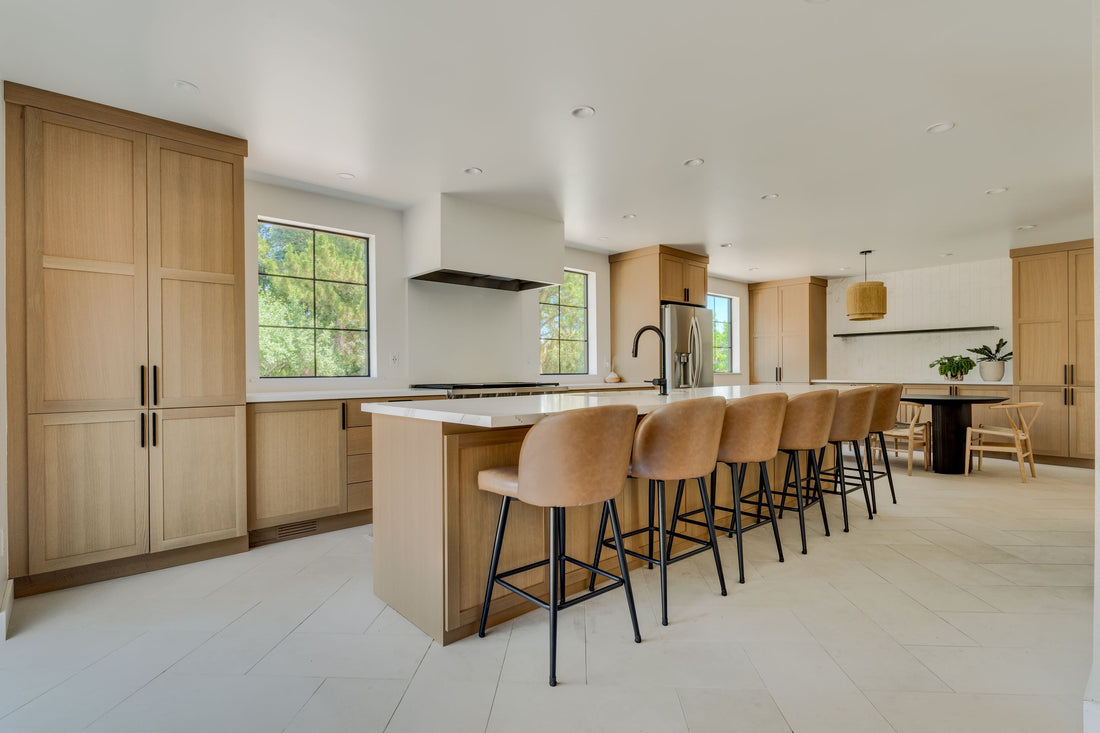
7 Things Every Custom Cabinet Order Should Include
Share
Before you purchase custom cabinets, make sure these 7 things are included in your order
Buying custom-made cabinets can be confusing. It's hard to tell exactly what you're buying, and trying to compare prices offered by different cabinetmakers is confusing.
So, before you place your order, make sure it includes these 7 things.
1. All of the pieces and parts you will need to install the cabinets.
All of the parts you need to install your new cabinets should be included in your order. Make sure you see:
- The filler pieces you need where your cabinets meet a wall,
- Crown molding for the top of wall and tall cabinets,
- Base molding, also called toe board or toe kick, for the bottom of base and tall cabinets,
- A touch-up kit to cover the tiny nail holes made during installation,
- And, of course, the cabinets themselves.
2. A clearly stated delivery price.
Custom cabinetry requires special handling and delivery, and that can be expensive. Your cabinetmaker should let you know if delivery will be free or if you will have to pay extra. If you have to pay extra, they should tell you how much.
3. Detailed, dimensioned drawings of the cabinets you're ordering.

There's a saying in design and construction; "the drawings rule." In other words, your cabinetmaker is going to build your cabinets based on a set of drawings. To guarantee that any specifics you've discussed during the design process are included in your cabinets, make sure they are included in the drawings. Review the drawings, understand them, and send any changes you want to make to them to your cabinetmaker in writing.
At a minimum, you should receive:
- A floor plan
- A front elevation
- Side elevations, when sides are visible


A 3D sketch or color rendering of your new cabinets is a nice bonus.


4. A description of the wood and finish that you have chosen.

You get to choose the wood and finish (stain or paint) for the visible parts of your new cabinets: the doors, drawer fronts, facing, and any exposed sides.
5. Your cabinetmaker should give you a free sample of the wood and stain you have chosen.
And, you should see your exact choice on your order. For example, "Premium Alder Wood with Coffee Stain" or "Cloud White Paint on Paint Grade Material."
6. Your order should also include a description of the wood.
Natural wood is graded based on its quality and appearance with better woods demanding higher prices.
For example, look at these descriptions for alder wood.
- Premium Alder: Light brown with a yellow, peach, or reddish tinge. Fairly straight-grained with a uniform texture and good dimensional stability. Knots are no larger than 1/4" and will be solid and tight. End grain absorbs more stain and highlight, which is especially evident - darker - on panel face profiles.
- Knotty Alder: Light brown in color with a yellow, peach, or reddish tinge. Fairly straight-grained with a uniform texture. Split knots and open knots are characteristic. Knots may be any size and open through both faces - front and back - of the wood. Through use and acclimation, sound knots will become unstable and may separate from the surrounding wood. End grain absorbs more stain and highlight, which is especially evident - darker - on panel face profiles.
In the descriptions above, I italicized the differences between premium and knotty alder. It comes down to the presence of knotholes. With knotty alder, you can expect them. That may be fine. For example, in our Modern Country collection, we offer only rustic and knotty woods; it's part of the look. What's important is that your cabinetmaker tells you what to expect in writing on your order.
7. A Warranty
You probably won't replace your cabinets for twenty or thirty years. What happens if something goes wrong? To protect yourself, you should receive a written warranty before you place your cabinet order.



